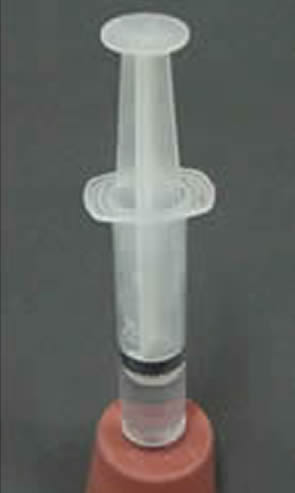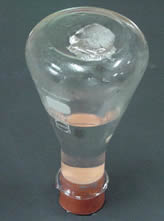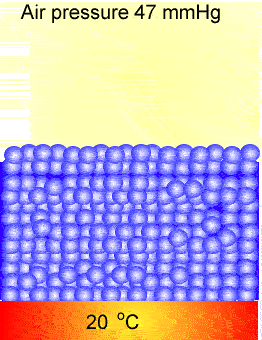Our atmosphere acts
as a safety blanket around the Earth. It:
- protects us from U.V. radiation from the sun, via the ozone layer.
- moderates the temperature of Earth’s surface.
- it keeps water from boiling at very low temperatures.
- provides oxygen for us to breathe.
The astronaut’s space suit actually acts like an atmosphere protecting
the astronaut from the dangers of space.

 |
Another
demonstration can be conducted by boiling water in a flask. Allow
the water to boil for a little while so that most of the air is
driven out of the flask. Stopper the flask and turn it upside
down on the bench. Place an ice cube on its base and watch the
water inside the flask start to boil. The
ice cube causes the air pressure inside the flask to drop. |
1) Explain why placing an ice cube on the glass reduces the air pressure. Use the words: water vapour, condensation, molecule, vacuum.
2) How would the world be different if the atmospheric pressure was half of what it is now on the surface of the Earth?
3) Consider the animation on the right. It shows how the vapour pressure of water increases as heat is applied. It increases until it equals the pressure at the surface of the liquid at which point it starts to boil. At 47 mmHg the boiling temperature of water is 37 oC. During a training mission the cabin containing the crew suffered sudden depressurization. The astronaut complained that the saliva in his mouth started to boil. However the water in his blood did not start to boil even though his body temperature was high enough to cause the water to boil. Explain why.
Hint. Think of how the body maintains blood pressure.
